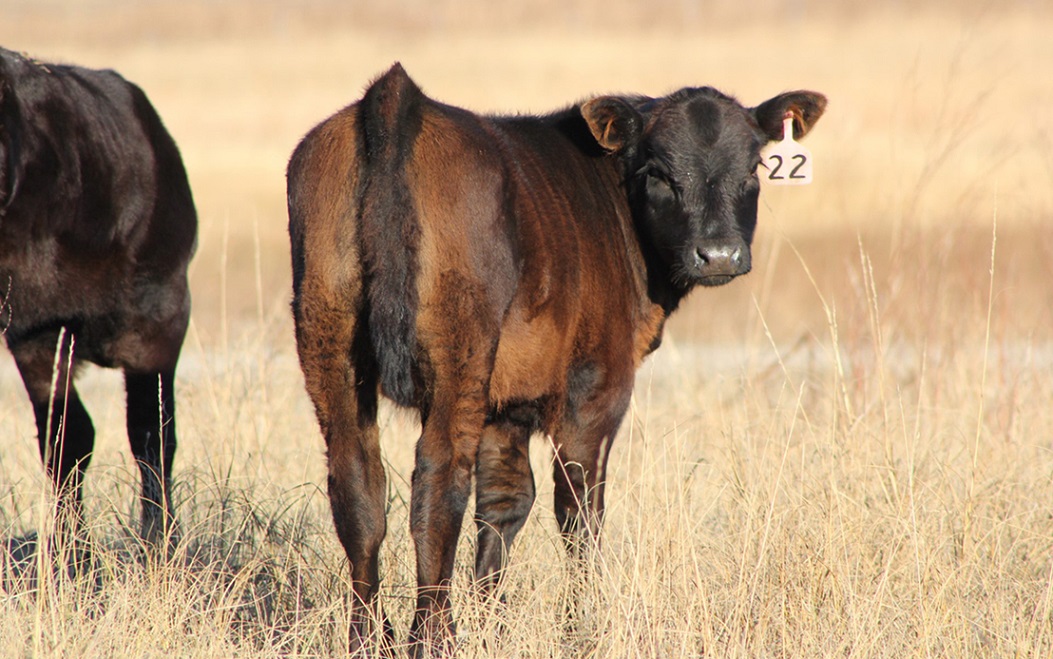
Article used with permission from Successful Farming.
By Gene Johnston, Successful Farming
Fifty pounds – the weight of a bag of feed – in extra calf weaning weight seems like a worthy goal. It could add up to $100 per cow to your sales. The following four cow/calf experts give their best low-cost tips on how to get an extra 50 pounds.
1. RACHEL ENDECOTT, Extension beef specialist, Montana State University. “Two things,” she says without hesitation. “Crossbreed and implant.”
There are a lot of straightbred Angus herds in her area, and the breed has done a very good job of marketing. “Some producers think crossbreeding programs are too complicated, but you don’t always need to use another color bull,” she says. “Pick another black-hided breed or even a composite like SimAngus. You won’t get 100% of the heterosis benefit, but you’ll still get improved weaning weight over straightbred.”
That might get you halfway to the 50-pound goal. Implanting could get the other half. “It’s fairly easy to implant at branding. Just use the right product for the animal’s age and gender,” Endecott notes.
Two that are approved for suckling steers and heifers are Synovex C and Ralgro and generally cost $1.50 to $2.00 per head.
2. SANDY JOHNSON, Kansas State University Extension cow/calf specialist. Her extra 50 pounds starts with the incremental gains: calf implants, good deworming, and fly control.
Johnson then goes to her soapbox topic: early pregnancy diagnosis and ruthless culling of late calvers.
“Once a cow becomes a late calver, she’s very likely to continue,” she notes. “The difference in early and late calvers will vary with the breeding season, but it can easily exceed 50 pounds at weaning.”
The solution could be a time-controlled breeding season and a timely pregnancy check. Bulls are pulled after two or three breeding cycles, and cows that get bred calve early in a four- to six-week window. Average weaning weights go up.
Timely pregnancy checking doesn’t have to be at an inconvenient time. “If you start breeding on June 1, five months later is November 1. I might prefer earlier, but I can live with five months,” she says.
3. RICK FUNSTON, beef cattle reproductive specialist at the Nebraska Extension Center in North Platte. He offers creep feeding as a consideration. It will add the pounds – just make sure you do the economics.
Estrous synchronization can get more calves born early in the calving season and improve weaning weights. “One approach that works is to turn the bulls in, then five days later give all the cows a shot of prostaglandin,” he says. “This synchs the cows and gives more early calves.”
His favorite idea is to use terminal sires selected just for growth traits. In this system, replacement females will be outsourced, since reproductive traits are not part of your sire criteria.
“We have an experiment in our teaching herd where half of the cows are bred to terminal sires selected purely for high growth and output,” he says. “The others are on a conventional breeding system where female replacements are kept. We see about a 75-pound weaning advantage to the terminal sires. It’s a system that we haven’t used nearly enough in the beef industry.”
4. ERIK JACOBSEN, general manager, Deseret Ranches of Florida. He makes a counterpoint. “While weaning weight is important, we focus more on total pounds weaned off each production unit. Often, it’s easier to produce more pounds by adding a few cows than by adding additional weaning weight,” he says. “If you fixate on weaning weight, you can actually reduce total pounds weaned. You inadvertently incentivize managers to reduce stocking rates to help increase weaning weights.”